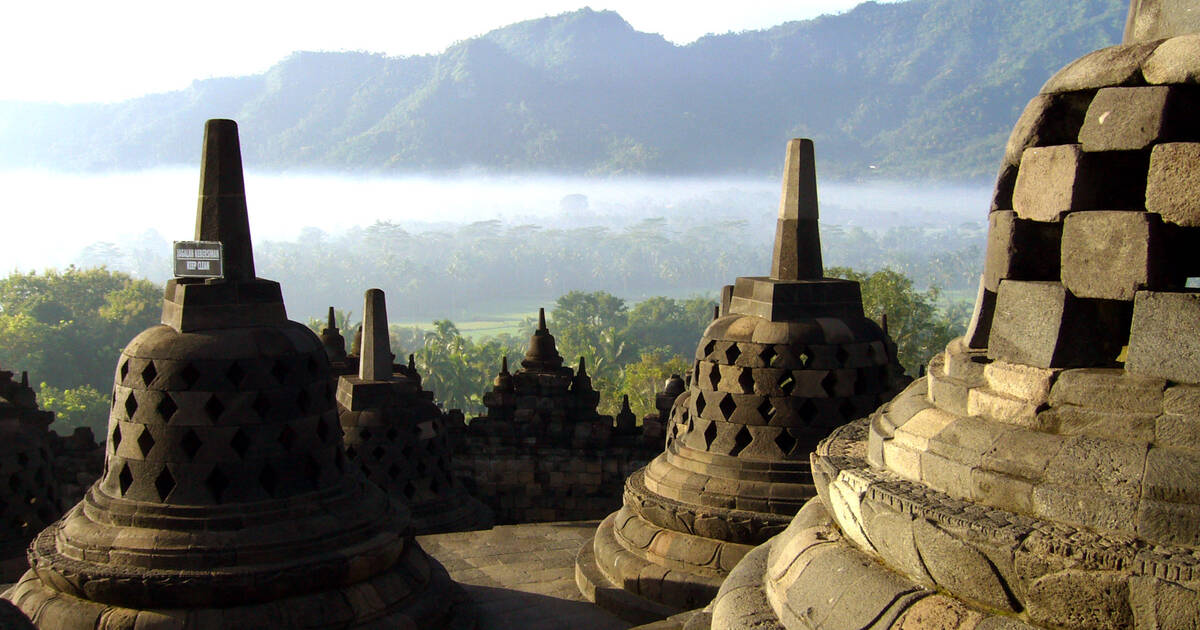Southeast Asia is home to some of the world’s most remarkable ancient temples, reflecting the region’s deep spiritual heritage and rich historical layers shaped by Hinduism, Buddhism, and indigenous belief systems.
Among these, several temples stand out both for their sheer scale and historical significance. The largest and oldest temples in Southeast Asia are not only architectural masterpieces but also enduring symbols of the civilizations that built them.
Angkor Wat, Cambodia

Let’s start with the most famous one. Angkor Wat, located in present-day Cambodia, is the most famous and largest temple complex in Southeast Asia, and indeed the world. Originally constructed in the early 12th century by the Khmer King Suryavarman II, it was initially dedicated to the Hindu god Vishnu before becoming a Buddhist temple in the later centuries.
Covering a site of over 160 hectares, Angkor Wat is a colossal example of classical Khmer architecture, featuring towering spires, extensive bas-relief carvings, and a vast moat that surrounds the central sanctuary. Its layout is meticulously planned, symbolizing Mount Meru, the center of the universe in Hindu cosmology.
The temple’s grandeur reflects the power and vision of the Khmer Empire at its height, and its preservation over centuries is a testament to its cultural importance. Today, Angkor Wat stands not only as a national symbol of Cambodia but also as a UNESCO World Heritage Site and one of the most visited religious monuments in the world.
Borobudur, Indonesia

Borobudur, located in Central Java, Indonesia, is the largest Buddhist temple in the world and one of the oldest in Southeast Asia. Constructed during the 8th and 9th centuries under the Sailendra Dynasty, this massive stupa-mountain complex predates Angkor Wat by several centuries.
Borobudur was built in the style of a mandala, representing the Buddhist concept of the universe. It comprises nine stacked platforms topped by a central dome and adorned with over 2,600 relief panels and 500 Buddha statues. The structure is both a shrine and a pilgrimage site; pilgrims ascend through its levels to symbolize the path to enlightenment.
The temple’s design incorporates Javanese indigenous elements blended with Indian Gupta art, reflecting the syncretic nature of Southeast Asian religious expression. Buried under volcanic ash for centuries, Borobudur was rediscovered and restored in the 19th and 20th centuries. Its age, size, and spiritual importance make it a cornerstone of Southeast Asian religious history.
Prambanan, Indonesia

Also located in Central Java and not very far from Borobudur, the Prambanan temple complex is the largest Hindu temple in Indonesia and one of the most significant outside of India. Built in the 9th century during the Sanjaya Dynasty, Prambanan was dedicated to the Hindu Trimurti: Brahma the creator, Vishnu the preserver, and Shiva the destroyer.
The central temple complex is composed of towering, intricately carved stone structures, with the largest being the 47-meter-high Shiva temple. Prambanan reflects the peak of Hindu architectural and cultural influence in the region before the rise of Islam.
Although damaged by earthquakes and abandoned for centuries, major restoration efforts have returned much of the complex to its former grandeur. Prambanan is now a UNESCO World Heritage Site and continues to be an important place for cultural and religious ceremonies.
Bagan, Myanmar

While not a single temple, Bagan in central Myanmar is one of the most expansive and historically rich temple landscapes in Southeast Asia. Between the 9th and 13th centuries, the Pagan Kingdom constructed over 10,000 religious monuments in the area, including temples, stupas, and monasteries.
Today, over 2,000 of these structures still stand, spread across the plains of Bagan. The temples of Bagan are mostly Buddhist, built under the influence of Theravāda Buddhism, which became dominant during this period. The site showcases a wide range of architectural styles and innovations developed over centuries.
Notable temples like Ananda, Dhammayangyi, and Shwezigon reflect the architectural evolution and spiritual depth of Burmese Buddhism. Bagan, recognized as a UNESCO World Heritage Site in 2019, remains a major cultural and religious symbol of Myanmar.
Wat Phra Kaew, Thailand

Although not the oldest or largest in terms of physical size, Wat Phra Kaew in Bangkok, Thailand, is among the most revered temples in Southeast Asia. Officially named Wat Phra Sri Rattana Satsadaram, it houses the Emerald Buddha, a highly venerated statue carved from a single block of jade.
Constructed in the late 18th century during the reign of King Rama I, Wat Phra Kaew is part of the Grand Palace complex and represents the spiritual heart of the Thai nation. Unlike older temple ruins, it is still in active religious use and serves as a symbol of the Thai monarchy and Buddhist devotion.



















